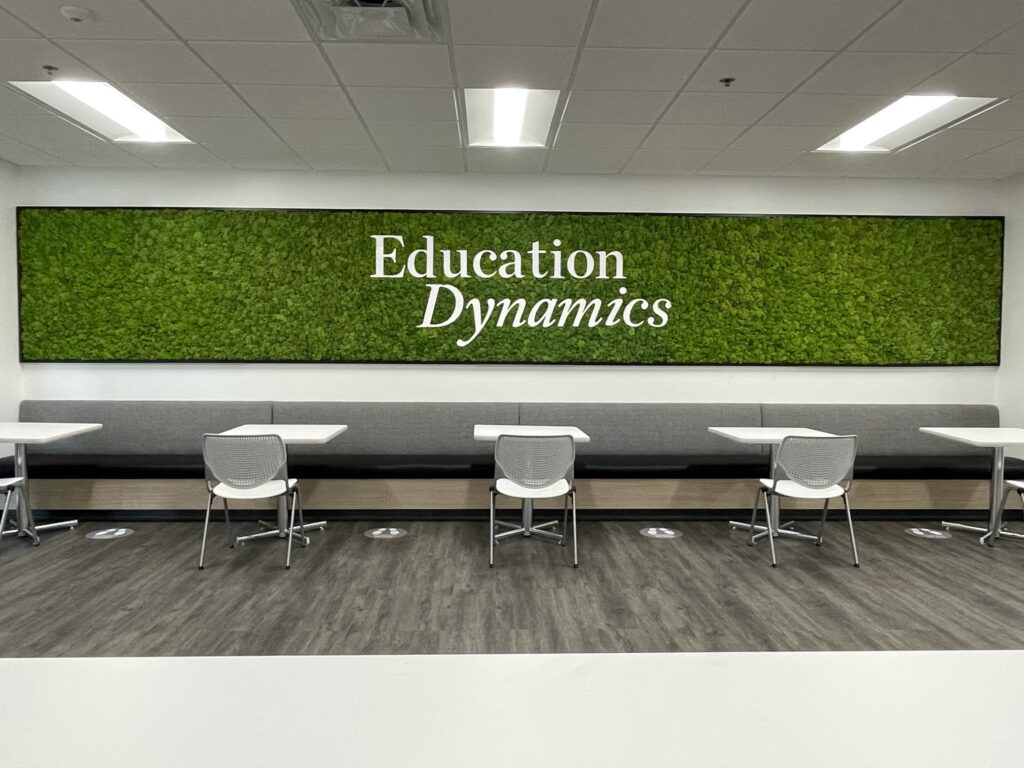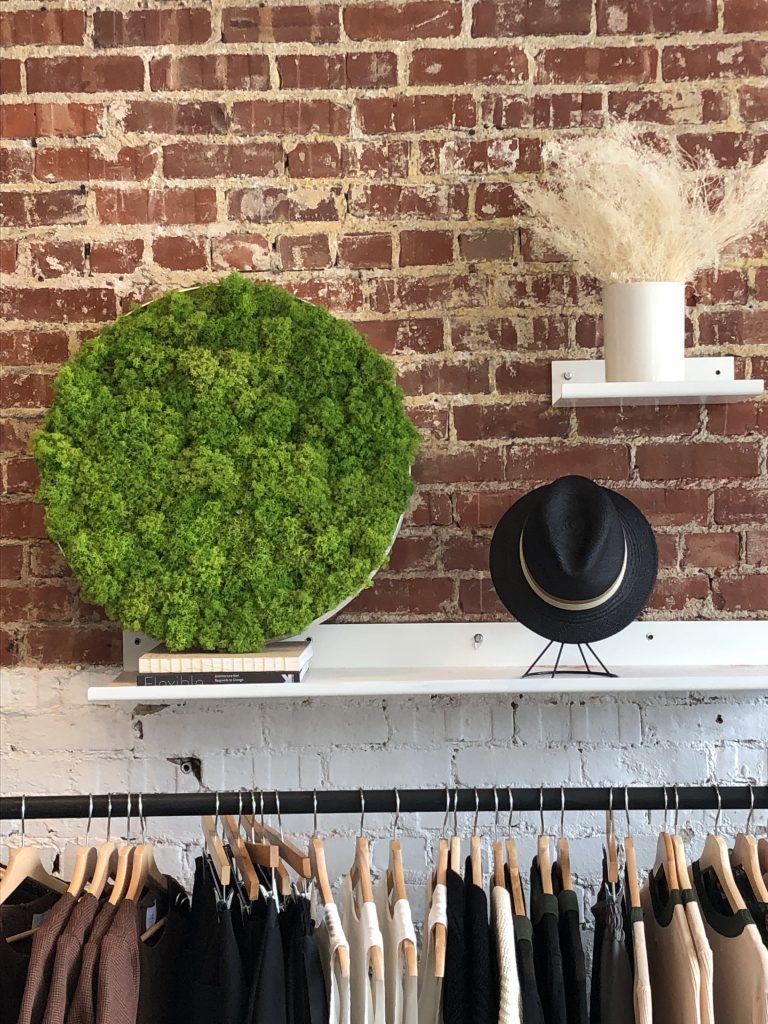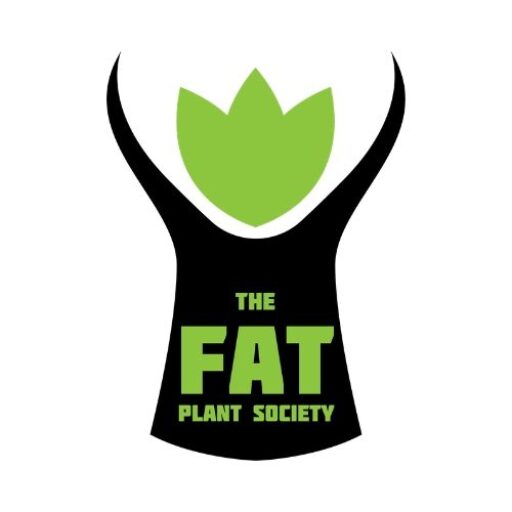Can biophilic design and the incorporation of greenery into your space really make you happier, healthier and make your space a space that people seek out and actually want to be?

The idea that people have an innate affinity for nature dates back to the 1980s, but designing spaces according to the principles of nature is reaching a peak now.
The Why of Green Marketing & Biophilic Design
It will be no surprise to you that many consumers make their purchase decisions (large and small) based on the stated environmental impact of the product or service.
Consumers seek purchase options and seek to identify themselves with companies that are green compliant and are willing to pay a premium for a greener lifestyle.
Green marketing is not just an environmental protection tool but also, a marketing strategy.
What does science tell us?
The biophilic design craze has been fueled by a host of scientific studies that indicate that being closer to nature, whether that’s in the form of houseplants or natural light, is beneficial for your health.
A landmark 2019 study found that children in Denmark who had been exposed to more greenery had 55% fewer mental health problems later in life compared to those who weren’t exposed to nature.
Other research has shown that plants can reduce stress, help with focus, and even increase immunity.
Moss, for example, cleans the air of VOCs (volatile organic compounds), dampen voice frequencies and noise, and regulates humidity levels. Because moss is highly porous and thick, it does a remarkable job of cleaning the air not only of VOCs but also absorbs odors without retaining them so your space (be it a conference room or that first-impression lobby) always smells fresh.

But we don’t discriminate on any of nature’s materials. Plants, equally green and lush aid in moisture and air cleaning as well. While natural wood (responsibly sourced), removes CO2 from the atmosphere. It’s an excellent thermal insulator and acoustic insulator as well.

And how you design your space not only makes the first impression on your clients, it is also a testament to your green ethos.
A Brief History of Green Marketing
The American Marketing Association (AMA) held the first workshop on ecological marketing in 1975.
1980 was the first time green marketing was put into practice (funny when you consider the green movements of the 1970s–would’ve thought we would have seen green marketing earlier).
The AMA defines green marketing as the marketing of products that are presumed to be environmentally safe– that may include product modification, changes to production processes, packaging, advertising strategies, and also increased awareness of compliance marketing amongst industries.
It can also be seen as the promotion of environmentally safe or beneficial products.
Green Marketing: Big, Broad, Replete with Opportunity
Clearly, this is a broad definition that can encompass nearly any business model–but how do we highlight the important work we’re doing to be green and be good stewards of the environment?
Real greenery says an awful lot without using a single word.
Biophilic design may be used as a recruitment tool, it aids in retention and it is also a draw for customers into brick and mortar retail spaces.
Candidates make quick decisions as they enter your workspace and walk to the interview room, just as you are making quick decisions about them–you expect them to be well dressed, on time, and prepared for the interview.
Similarly, the entrance makes an indelible impression on the candidates as well. So let’s check that first impression:
Try this: Walk out the front door of your office and then enter with the mindset that you’re arriving at your office for a job interview. Are you impressed and excited just from walking in the front entrance? How did it look from the outside? Could you improve the lighting or freshen up the décor to better represent the caliber of your company?
Worn carpet, drab paint, messy desks, a lack of artwork on walls – these can all be real turn-offs for a candidate or even a longtime employee. Such conditions communicate that you view the workplace as strictly a space to get the work done, and nothing else. This sends the message you don’t care about your company or the conditions in which your employees work.
Is your workplace design killing your recruitment and retention efforts?
Chris Brennan | Performance Specialist Los Angeles, California
However, the traditional office workspace is not the only place that can benefit from real greenery. Architects and designers are incorporating green design into hospitals, office spaces, retail stores, senior living centers, hotels, spas, and even schools.
Empirical research has demonstrated that shopping environments can also evoke emotional responses in consumers and that these emotions, in turn, influence shopping behaviors and outcomes.
A neglected emotions-evoking element in the shopping environment appears to be in-store greenery. Although vegetation has been demonstrated to have positive and stress-mitigating influences in humans it has yet to be widely embraced in retail settings, likely due to the expense of maintaining living plants and living walls.
Enter moss
Because we walk through the world covered in green or carrying our latest piece to a meeting with a client or making a delivery, we can attest to the fact that lush, green, real moss literally stops people in their tracks.
We cannot count the number of times we have been stopped on the street and asked about the moss and we also observe the role moss plays in the restaurants in which we have green walls and other green installations.

In fact, we recently installed a series of pillow moss frames for a dental practice because the team wanted to evoke feelings of calm and well-being for their patients the moment they enter the office (but the topic of greenery in healing, health, and pain management will be saved for a future article).
Positive Impact for Consumers as well as the Planet
Green marketing (environmental advertising, and green word-of-mouth) and green psychological benefits (warm glow, self-expressive benefits, and nature experience) moderate the relationships between customer value, attitude towards the green product, and green purchase intention.
In marketing terms, ABC refers to Attitude-Behavior-Context.
This theory assumes that people act consistently with their expectations from specific actions (because we always make purchase decisions that align with our own values perfectly, right)? Well, often we do and we have seen significant increases in American shoppers putting their dollars where their values lie to so there is a lot to be gained as environmentalism and care for our natural environment returns to the forefront of our concerns.
So greening your space with sustainable moss and other greenery is an investment worth making. There is significant, positive impact in the form of traffic, revenue, recruitment, retention, and of course productivity amongst all team members.
It’s just as much an investment in your own well-being as it is your customers and employees.
Be well. Be green.
As always, yours in the love of all things green,
Kasey & Morten/TheFat Plant Society

